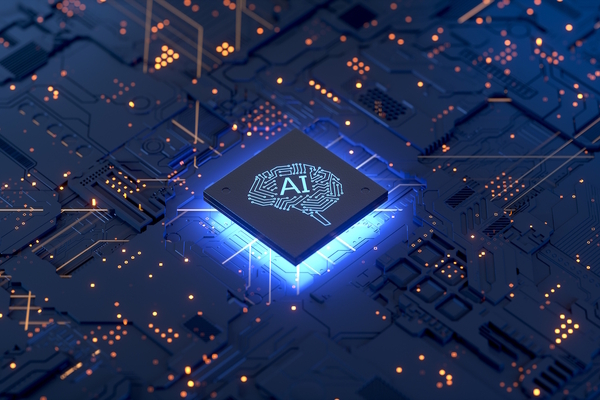The future of service desks – five fundamentals

Wanstor’s Francesca Lukes examines the major trends shaping the development of IT service desks
Over the next few years, IT service desk delivery will experience more innovation and change than ever before. Across the ecosystem, there is an ongoing and fundamental re-assessment of what service desks are there to deliver.
The days when their role was about finding and fixing issues are fast disappearing in favour of a broader enabling function, where technology adoption, customer experience and productivity become core service desk objectives.
Delivering on this potential is, however, not just a matter of implementing advanced technology tools. Organisations must first put the right foundations in place to bring these benefits to service desk teams and their users. In particular, there are five fundamental trends that will shape how service desks are designed and delivered:
1. From reactive to proactive
Responding to incidents and inbound tickets is no longer enough. Business leaders expect more from service desk teams to prevent issues and resolve them before they impact staff.
So, what’s the answer? Predictive intelligence technologies and advanced problem management strategies are set to revolutionise service delivery. By implementing highly interconnected systems, automated problem-solving and data-driven insights, these approaches will transform the service desk from being reactive to proactive.
The practical impact of this approach will be a significant reduction in the need for service tickets and, in many cases, their elimination entirely. Predictive intelligence and problem management not only enhance operational efficiency by automating routine tasks but also significantly improve the overall user experience.
2. From monitoring to observability
Monitoring tells you when something is wrong, while observability can tell you what’s happening, why it’s happening and how to fix it. Organisations everywhere have been monitoring the availability and performance of networks and infrastructure for years, but driven by the proliferation of applications, true value lies in the application and data layers.
However, the enormously increasing complexity inherent to modern technology estates demands more sophisticated management tools that provide observability of the end-to-end technology stack. These tools can support troubleshooting by using logs to pinpoint application crashes and lags, correlating that to related system activities.
3. From service experience to digital experience
Most service desk leaders will be familiar with the importance of Experience Level Agreements (XLAs). However, organisations are increasingly shifting to the more advanced and effective Digital Experience Management (DEX) model.
By integrating the monitoring, management and optimisation of end-to-end digital interactions between users and technology, DEX enables CIOs to drive improvements across the entire user journey.
Unlike traditional XLA metrics that focus only on the experience of service after a technical issue arises, DEX metrics provide a more meaningful representation of the actual technology experience of users and the financial impact of issues. This helps CIOs build better business cases and engage more effectively with stakeholders and senior leaders.
In this context, the emphasis shifts to measuring the effectiveness of the technology team and how the service desk delivers an effective digital experience across the business.
4. From cost centre to value driver
Transitioning from traditional SLAs to sophisticated KPIs offers a clearer view of the service desk’s impact. Beyond measuring response times, metrics should include resolution quality and user experience, which better reflect business value and highlight areas for improvement.
The real strategic value comes from someone not having to contact the service desk at all and instead being able to measure the effectiveness of the technology team and service desk by the ’digital experience’ of staff across the business.
For example, service desks should leverage AI-powered technologies to generate detailed performance insights. Qualitative metrics can drive desired business outcomes, such as supporting busy periods for a restaurant or ensuring system availability during peak hours.
AI technologies can then also help service desk leaders translate performance metrics into financial insight for business stakeholders. This includes factors such as cost savings from reduced downtime, improved productivity and better resource utilisation through automation and proactive management.
5. AI - from experimentation to implementation
Artificial Intelligence (AI) has moved beyond the experimentation phase and is now a critical component for successful service desks. AI’s applications are already extensive, from automating ticket categorisation, assignment and problem detection to enhancing interactions through natural language processing and the provision of real-time coaching for agents via sentiment detection.
The good news is that many IT Service Management (ITSM) toolsets are already incorporating these capabilities, with major vendors leading the charge. However, those organisations burdened with technical debt or relying on outdated tools like email will face significant challenges if they do not act swiftly.
Collectively, these developments represent an extremely exciting opportunity that demands not just new technologies but also a fundamental rethink of service desk operations and skill sets.
For CIOs considering whether their service desk is meeting the needs of their organisation, progress depends on improving their ability to benchmark performance and use data-led insight to create a business case for investment. This should be based on a clear understanding of the current level of service desk maturity, such as the number of tickets being logged versus industry norms, the average time to resolve, the number of open and aged tickets and the ratio of service desk agents to tickets.
This insight can then be used to evaluate how automation can be applied to optimise human resources, improve staff productivity and boost digital experience by focusing on overall efficiency gains – all of which are crucial to ensuring service desks deliver on their potential.
Francesca Lukes is CEO of Wanstor
Main image courtesy of iStockPhoto.com and VioletaStoimenova

Business Reporter Team
Most Viewed
Winston House, 3rd Floor, Units 306-309, 2-4 Dollis Park, London, N3 1HF
23-29 Hendon Lane, London, N3 1RT
020 8349 4363
© 2024, Lyonsdown Limited. Business Reporter® is a registered trademark of Lyonsdown Ltd. VAT registration number: 830519543





